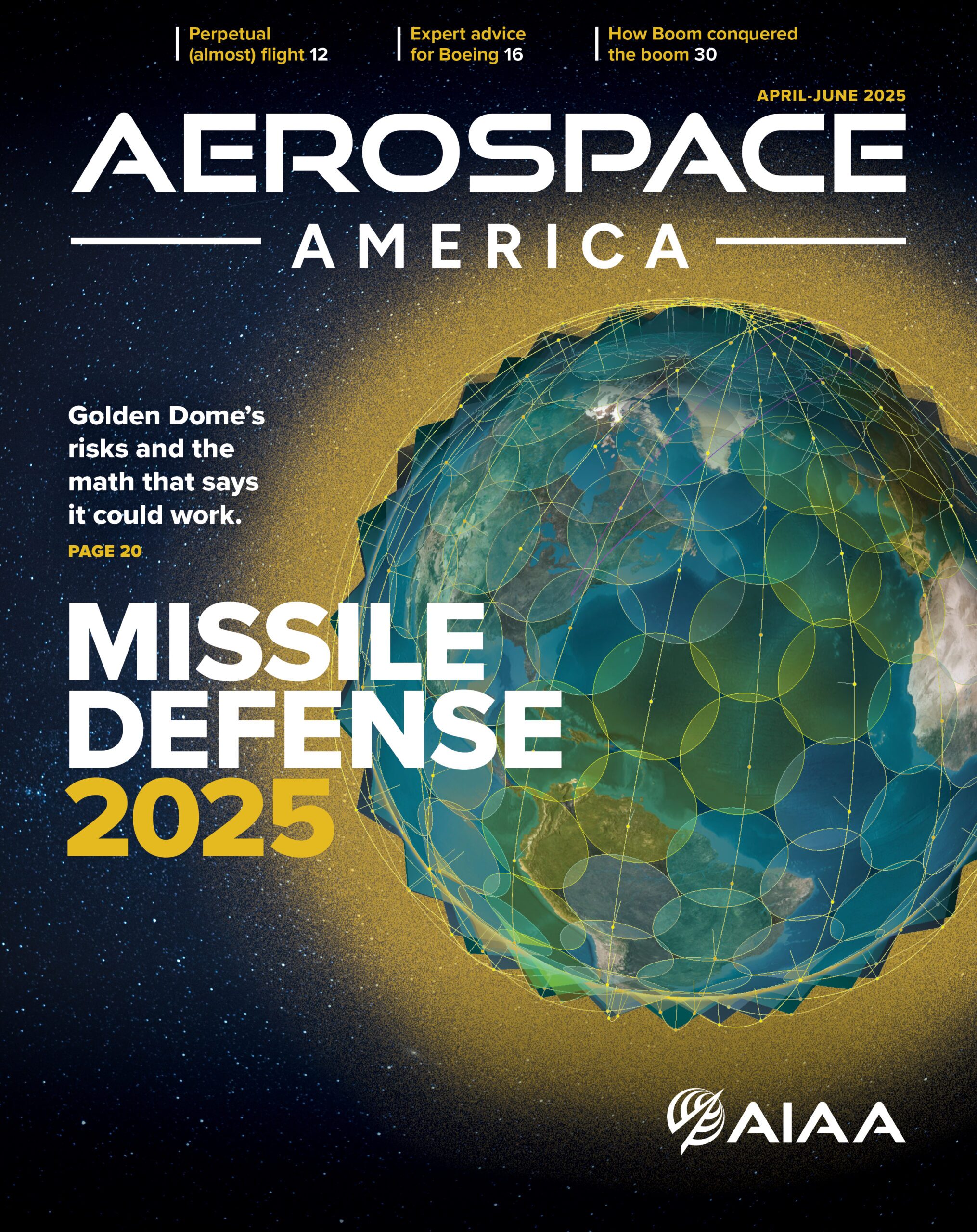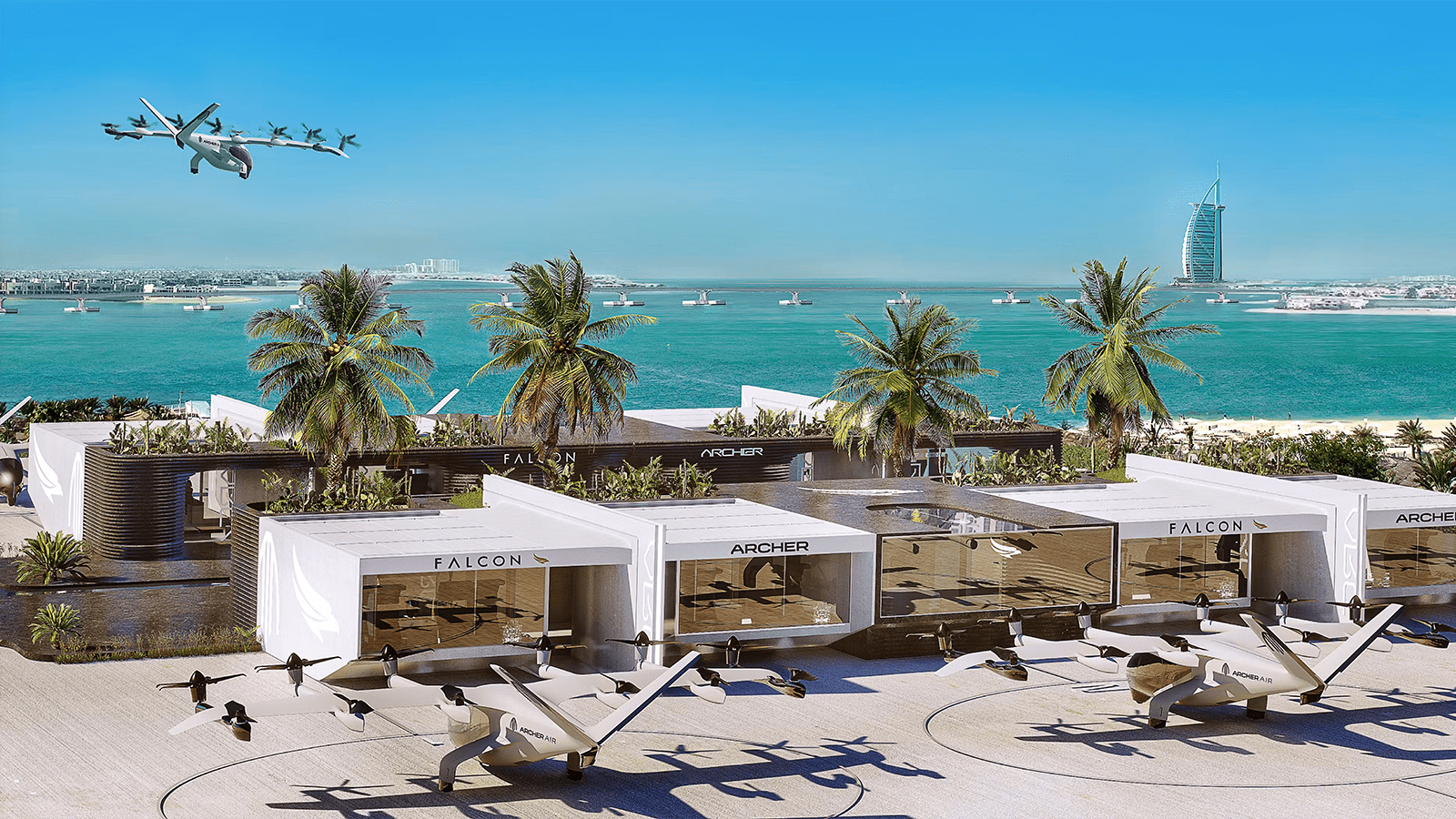Stay Up to Date
Submit your email address to receive the latest industry and Aerospace America news.
Heat, dust are among the factors that Archer and Joby plan to assess in flight tests
This story has been updated with new information about Joby’s flight campaign.
When electric air taxi builders Archer and Joby fly their prototypes in the United Arab Emirates, they’ll encounter conditions very different from those around the U.S. where the aircraft have flown. Located in the southeastern corner of the Persian Gulf, the UAE is famous for its high temperatures and summer dust storms that limit visibility.
The two California companies plan to launch their passenger services in the oil-rich nation, whose government is actively seeking to become a global leader in the emerging advanced air mobility market. Both are targeting 2026 for their first passenger flights, Archer in the Abu Dhabi emirate with its Midnights, and Joby in nearby Dubai with the S4s.
Archer said it plans to deliver a Midnight prototype for “region specific testing later this summer,” and Joby had told me in early June that it was “on track to begin testing in Dubai by the middle of this year.” On June 20, the FlightAware tracking website began recording an aircraft with a Joby tail number flying in Dubai. I’ve reached out to Joby for confirmation, but haven’t yet heard back. [Editor’s note: Joby on June 30 confirmed that it had begun flight tests in Dubai. Read our article here.]
Archer and Joby did not make anyone available for interviews about the UAE conditions and their flight test plans, but in emailed statements expressed confidence in their designs. Neither company has yet flown in the Middle East, but an S4 prototype has been flown at Edwards Air Force Base in the Mojave Desert since late 2023. Joby delivered a second prototype earlier this year as part of the company’s $131 million contract with AFWERX, the Air Force Research Laboratory’s innovation arm.
Nevertheless, the upcoming UAE flight tests are needed to determine how the aircraft fare in that region and what, if any, adjustments are required ensure safe and efficient operations.
“Joby’s aircraft is designed to operate in a variety of conditions,” the company told me, “and the purpose of in-market testing is to deeply understand how the aircraft performs and how we will need to operate it ahead of starting commercial service.”
History offers some clues about likely challenges these air taxis could encounter. As a lieutenant colonel in the U.S. Air Force, Cary Grant in the 1990s piloted C-20 and C-141 transports in the Persian Gulf as part of the Desert Shield and Desert Storm operations. The dust and heat were persistent challenges, he told me in an interview.
“I can tell you that the dust there is not like what we have here” in the U.S., said Grant, who’s now an assistant professor at Embry-Riddle’s Prescott Campus in Arizona. “In Saudi Arabia, it’s very fine particles, almost like flour. It gets down in the nooks and crannies. They had a lot of problems with it, eroding blades, getting into seals — it created all sorts of havoc.”
This required the Air Force to perform maintenance more frequently; however, he said that doesn’t necessarily mean the air taxi operators will have to do the same. For one, the aircraft will be flying in different areas: Many of the military aircraft had to land or take off directly in remote areas of the desert, while at least initially, the electric air taxis will fly in cities and other metropolitan areas. But there is likely to still be some dust, thanks to the frequent storms.
Rex Alexander, a helicopter pilot and aviation consultant, described a similar experience from his days in the U.S. Army: “With helicopters flying in the desert, especially in a storm, it’s like being in a sand blaster,” he told me.
Archer seems to have accounted for this: “With regard to sand, all of our propeller blades have Nickel leading edges — this very hard metal prevents erosion due to sand and dust,” the company told me in its emailed statement.
The heat is another concern. The UAE in May reported a record-breaking 52.1 degrees Celsius (124.9 degrees Fahrenheit) — the second hottest in the country’s history since it began recording the temperature in 2002. Air is less dense in high temperatures, which can decrease aerodynamic lift and “put a large demand on electric motors,” Grant said.
Electric motors and lithium batteries also perform more poorly as they heat up, noted Alexander. “When I used to fly OH-58 A/C’s for the U.S. Army in the Mojave Desert, on really hot days I observed some of the more advanced helicopter types start their aircraft,” he said. “And while the engines would be fine, they may have to wait for the electronics to cool prior to taking off.”
He added: “You also have to look at how much money will be spent just keeping the ramp clear of dust or sand — keeping the dust out, keeping everything cooled down.”
But perhaps the biggest challenge will be maintaining comfortable conditions inside the cabin.
“Can the aircraft perform? Yes, I’m sure it can,” Alexander said. “But the real question in hot environments is, can the aircraft perform to a point where the passengers are comfortable? Maybe the aircraft is okay, but the people in the back are sweating so bad.”
And if operators need to expend more battery power to keep the cabin cool, the aircraft might not be able to travel as far. “Because if you’re trying to use power to cool the aircraft, you’re sucking out the power you need for the range you’re trying to accomplish,” Alexander said.
Similarly, Archer and Joby appear to have taken this into account in their designs. Both aircraft have white exteriors — a recent change for Archer, which had painted previous models and prototypes black.
“We specifically designed the aircraft to operate in high-temperature environments,” Archer told me. “This drove sizing for thermal management of the systems on the aircraft and the environmental control system (air conditioning) for the cabin.”
Alexander said only time and flight tests will tell.
“I think the challenge they’re going to run into is the same in the helicopter world: Turbulence on hot days isn’t going to be fun, especially for the people in the back.”
Opening image credit: A rendering of an upgraded heliport at The Palm hotel in Dubai, where Archer Aviation last year announced it would operate its Midnight air taxis.
About paul brinkmann
Paul covers advanced air mobility, space launches and more for our website and the quarterly magazine. Paul joined us in 2022 and is based near Kennedy Space Center in Florida. He previously covered aerospace for United Press International and the Orlando Sentinel.
Related Posts
Stay Up to Date
Submit your email address to receive the latest industry and Aerospace America news.




